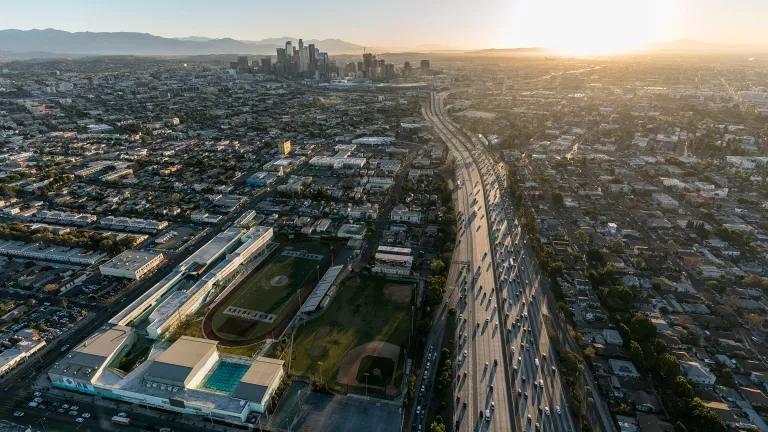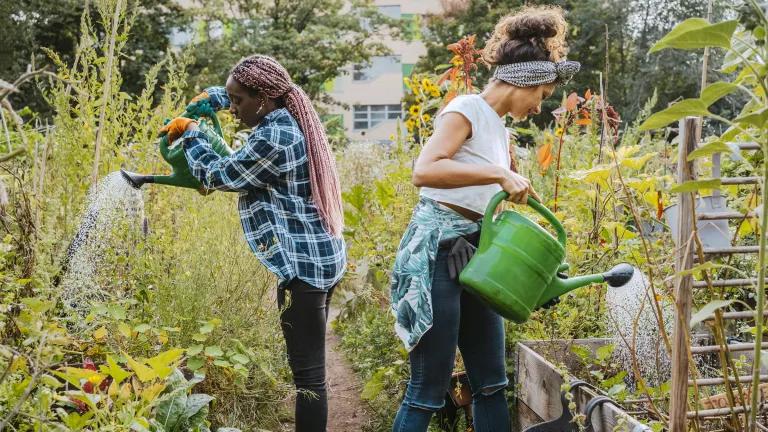Create Parks & Affordable Homes, Avoid Green Gentrification

Residents of low-income neighborhoods in Los Angeles face a dire lack of parks and access to open space, and these inequities frequently fall along racial lines. Local and state initiatives such as Measure A and Proposition 68 have bolstered funding for public parks, focusing on park-poor communities, and the city is increasing its park space. However, as public and private investment in parks in low-income neighborhoods increase, so does the potential for “green gentrification.”
The Los Angeles Regional Open Space and Affordable Housing (LA ROSAH) Collaborative, of which NRDC is a member, came together to address the challenge of green gentrification by developing and advancing strategies that counter displacement and promote access to affordable housing and open space. As part of the collaborative, LA THRIVES, Enterprise Community Partners, and the Southeast Asian Community Alliance (SEACA) co-authored Pathway to Parks & Affordable Housing Joint Development, which identifies strategies for tackling the dual crises of a lack of affordable housing and open space through joint development that promotes equitable and sustainable development.
Modeled after joint-development strategies that encourage transit-oriented development (TOD), the paper identifies five “typologies” of joint development that could integrate affordable housing with open space access:
- Transformative infrastructure that integrates affordable housing sites with the upgraded infrastructure, and implements anti-displacement strategies such as value capture, tenant protections, and affordable housing preservation. Examples include the 11th Street Bridge Park in Washington, D.C. or the revitalization of the LA River.
- Neighborhood transformation scattered site approach, which identifies multiple parcels throughout a district and implements shared infrastructure, thematic or programmatic consistency, and coordinated funding strategies. Example include Sustainable Little Tokyo or the Fitzgerald Revitalization Project in Detroit.
- Large master planned infill development of seven or more acres that accommodates both homes and publicly accessible open space and/or green infrastructure on site. Examples include the Jordan Downs Revitalization project.
- Infill development with housing and open space on-site on a less than seven acre urban infill site. Examples include the Slauson and Wall project in South LA.
- Infill development with housing and open space on different sites within the neighborhood, combines a housing development with open space or green infrastructure on adjacent public right-of-ways or smaller infill sites. Examples include the 7th + Witmer project in Westlake.
Joint affordable housing and park development presents an exciting opportunity to help address green gentrification in a variety of neighborhoods vulnerable to displacement. NRDC is proud to be a part of this effort at such a crucial moment in Los Angeles’ land use and community development future, and we look forward to seeing how this framework for equitable, sustainable development will take shape in the coming months and years.
For more information, download the full report here. You can also read more about the report from our partners at SEACA and LA THRIVES here. Members of the LA ROSAH collaborative also participate in the Strong, Prosperous, and Resilient Communities Challenge.
Thanks to Sunjana Supekar for contributing to this post.



